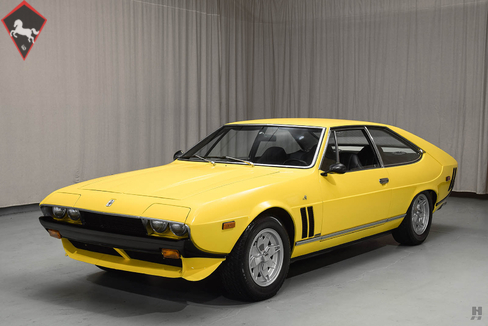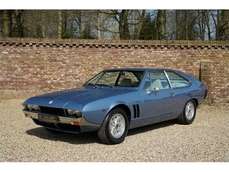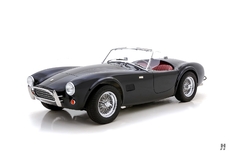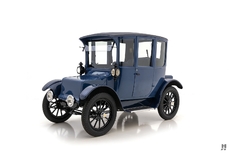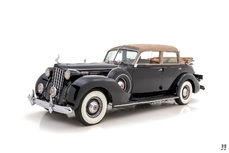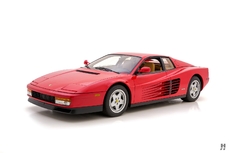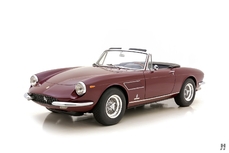Iso Lele Sport 1974
Allgemeine Beschreibung :
Isothermos was an Italian refrigerator manufacturer founded in Genoa Italy in 1939. It was taken over in 1942 by Renzo Rivolta, a car-crazy engineer and industrialist. Mr. Rivolta ended refrigerator production and moved the company to Bresso, Italy where they began production of high-quality motorcycles. Isomotos, as they were known, were very well-built bikes with excellent performance, and despite being rather more expensive than the competition, proved popular with the Italian public. While motorcycles were critical in getting the war-torn country back on wheels, buyers needed something more practical for year round use and runs to the shops. The solution came in the form of the Iso Isetta bubble car, a cheap, simple three (or four, depending on year and spec) wheeled micro car with a motorbike engine and room for two adults and some groceries. The Isetta was a moderate success in the home market, but it was Rivolta’s decision to sell the design rights to other companies that proved his biggest stroke of genius. Most notably, BMW produced a version of the Isetta that became one of the most popular microcars in Germany, exactly what the physically and economically devastated nation needed post-war.
Renzo Rivolta’s business acumen afforded him the cash he needed to move decidedly upmarket from the Isetta and begin production of a line of elegant and stylish GT cars. His new cars utilized Italian designed chassis and bodies built by the legendary Carrozerria of the day, but to save on development costs, he utilized cheap and reliable American V8 horsepower. The Rivolta and Grifo were powered by Corvette-spec engines from Chevrolet. After Renzo’s death in 1966, his son Piero took over operations and continued to expand upon his father’s dream by adding additional models and even making a foray into motorsport.
The Lele (named for Piero’s wife Lele Rivolta) is one of the post-Renzo Iso cars, debuting in 1969 as part of a three-car lineup that included the 2-seat Grifo, the four-door Fidia and the four-seat GT-style Lele positioned between the two. The Lele was Piero Rivolta’s answer to the Lamborghini Espada, Maserati Mexico and the Ferrari 365 2+2; a uniquely styled GT coupe which bore more than a passing resemblance to the Espada, particularly in the long and dramatic fastback roofline and slightly chunky proportions. This is hardly coincidence as both cars were styled by Bertone at about the same time. From 1969 through 1972, the Lele was powered by Chevrolet’s 327 V8 engine. From 1972 through the company’s demise in 1974, the cars utilized the big Ford 351 Cleveland which delivered a healthy boost in power from the 327. Also in ’72, Iso had teamed with Marlboro to put their branding on a Frank Williams-designed Formula 1 car. As a promotion, two stripped down Marlboro Edition cars were built for the team drivers, which subsequently spawned the production IR6 Sport. The Lele Sport featured blacked out bumpers, a chin spoiler and most notably, a Cobra Jet-spec Ford 351 tuned to a very healthy 360hp.
This wonderful, late-production 1974 Iso Lele IR6 Sport is one of just 20 such examples out of a total run of 285 Leles. This outstanding car has been treated to a full, bare-metal, engine-out respray in original Lemon Yellow paint. The quality of the restoration is excellent and is backed with an array of receipts and photographic documentation of the process. Contrasting the Lemon Yellow paint work are the black bumpers and a lower chin spoiler which are unique to the Lele Sport models. The exterior trim is in very good condition and the car rides on a set of proper and fabulously styled Campagnolo alloy wheels, also unique to the Iso Lele.
The archetypal Italian GT cabin has been restored to a very high standard and presents extremely well. The four individual bucket seats are trimmed in quality black leather and the black wool carpets appear very fresh. This example also features air conditioning, electric windows and a later Alpine AM/FM stereo, allowing 1970’s GT-Man to arrive at his destination in comfort and style.
GT-Man would also arrive to his destination early, thanks to the tuned 351 Cobra Jet V8 making a full 360 horsepower and an ocean of torque. As part of the engine-out restoration, the big American V8 was detailed with proper valve covers, a correct air cleaner and proper finishes and fittings. A Pro-Comp electronic ignition system was added for additional reliability, fine tuning and smooth performance. The V8 is mated to a Ford automatic transmission, which further enhances the relaxed high-speed, continent crushing ability of this Lele Sport. This example runs extremely well and is a real thrill to press on, with a great thumping soundtrack and excellent road manners. We love the Lele’s unique style, as well as its incredible performance. With just 20 such examples of the Sport produced, it is sure to be a hit on the road or on the show field.
http://hymanltd.com/vehicles/5814-1974-iso-lele-sport/
1974 Iso Lele Sport is listed verkauft on ClassicDigest in St. Louis by Mark Hyman for $98500.
Fakten der Auto
Karosserietyp : Auto Marke : Iso Modell : Lele Ausführung : Sport Hubraum : 0.0 Modelljahr : 1974 Lage : Missouri
Verkauft
Angaben Zum Verkäufer
Verkauft
People who viewed this Iso Lele also viewed similar Iso listed at ClassicDigest
Other cars listed for sale by this dealer
über Iso
Die Geschichte von Iso beginnt mit der Gründung von Iso Autoveicoli S.p.A. in Italien Anfang der 1950er Jahre durch Renzo Rivolta, einen Unternehmer mit der Vision, eine einzigartige Mischung aus italienischem Stil und amerikanischer Kraft in der Welt der Automobile zu schaffen.Im Jahr 1953 führte Iso Rivolta sein erstes Auto ein, den Isetta. Dieser eigenartige Kleinwagen erregte Aufmerksamkeit aufgrund seiner geringen Größe und der unkonventionellen Eingangstür vorne. Er wurde zum Vorläufer des "Bubble Car"-Trends in Europa und wurde sogar an andere Hersteller lizenziert, darunter BMW, die ihre eigene Version des Isetta produzierten.
Es war jedoch Anfang der 1960er Jahre, als Iso seinen wahren Stempel auf der Welt der Automobilindustrie setzte, mit der Einführung des Iso Rivolta GT im Jahr 1962. Dieses luxuriöse Grand Touring (GT)-Auto zeichnete sich durch ein elegantes und zeitloses Design aus, das vom renommierten Designer Giorgetto Giugiaro geschaffen wurde. Das herausragende Merkmal des Rivolta GT war sein Antrieb, ein 327 Kubikzoll großer Chevrolet V8-Motor. Diese Entscheidung, amerikanische V8-Motoren zu verwenden, setzte Iso von vielen seiner italienischen Konkurrenten ab, da es eine einzigartige Kombination aus italienischer Handwerkskunst und amerikanischer Kraft bot.
Der Iso Rivolta GT wurde für seinen Komfort, seine Leistung und seinen Stil gelobt. Er zog Automobil-Enthusiasten und Sammler an, die seine einzigartige Herangehensweise an die Schaffung eines GT-Autos schätzten. Der Erfolg des Rivolta GT bereitete den Boden für weitere Entwicklungen.
Im Jahr 1965 führte Iso den Iso Grifo ein, ein weiteres leistungsstarkes GT-Auto. Der Grifo wurde von Bertone entworfen und verfügte, wie sein Vorgänger, über amerikanische V8-Motoren, die oft von Ford und Chevrolet stammten. Der Grifo wurde nicht nur für seine leistungsstarken Motoren gefeiert, sondern auch für sein fesselndes Design, das mit einigen der berühmtesten Sportwagenhersteller Italiens konkurrierte.
Die Marke Iso setzte die Erweiterung ihres Modellangebots fort und führte Autos wie den Iso Lele ein, ein raffinierteres und luxuriöseres GT-Auto, und den Iso Fidia, eine Limousine mit vier Türen. Diese Modelle setzten die Tradition fort, italienische Eleganz mit amerikanischer Motorleistung zu kombinieren.
Eine der ikonischsten Kreationen von Iso war der Iso Grifo 7 Litri, der einen gewaltigen 7-Liter-V8-Motor besaß. Der Grifo 7 Litri verkörperte einen luxuriösen und gleichzeitig unglaublich leistungsstarken GT, und sein auffälliges Design fing die Essenz der Iso-Philosophie ein.
Trotz der positiven Kritiken und einer engagierten Fangemeinde hatte Iso finanzielle Schwierigkeiten, und die Ölkrisi...
